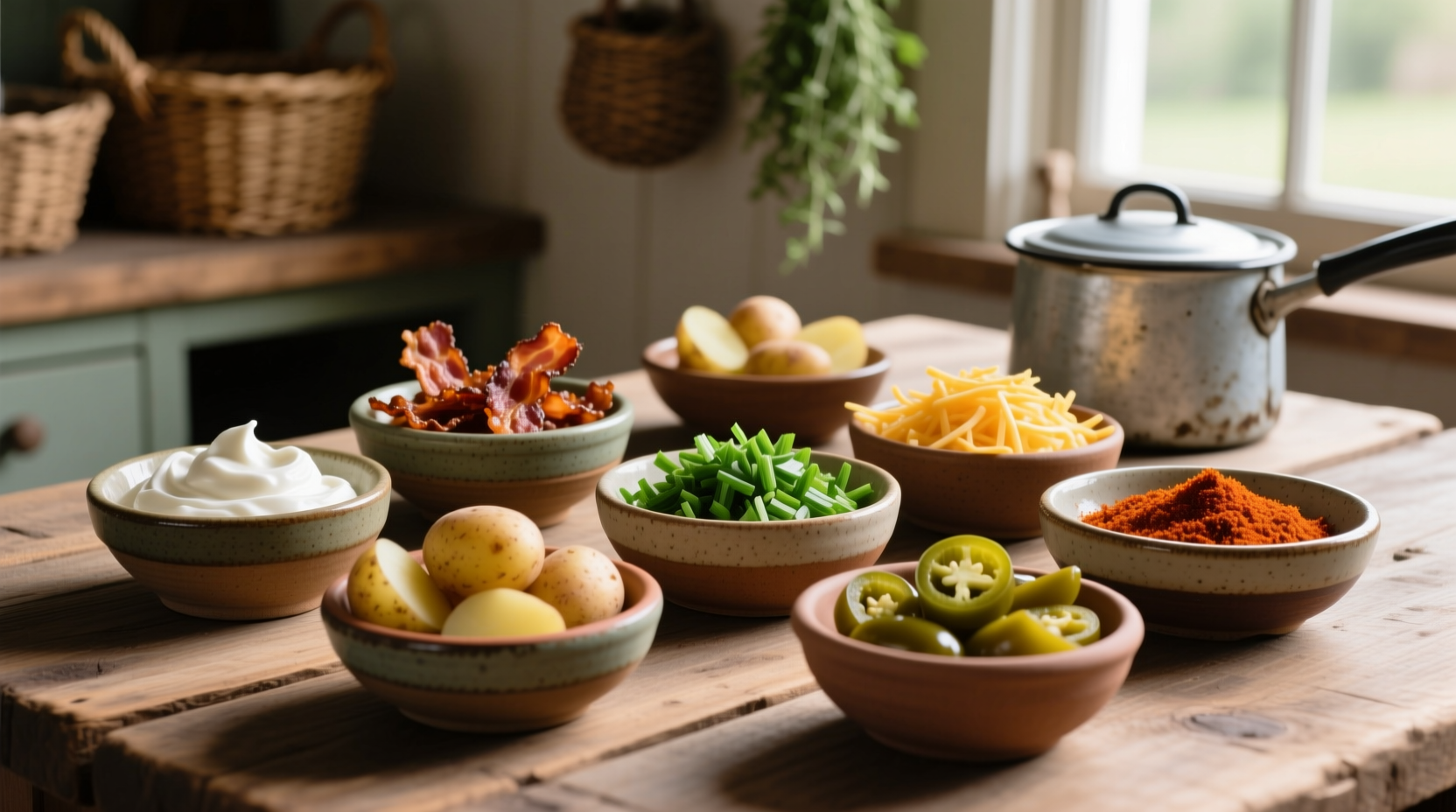Discover how to transform ordinary potatoes into extraordinary dishes with the right toppings. Whether you're preparing a weeknight side or elevating a holiday centerpiece, understanding the science of flavor pairing with potatoes can dramatically improve your culinary results. This guide reveals professional chef techniques for selecting and combining toppings that perfectly complement different potato varieties and cooking methods.
Why Potato Topping Selection Matters
Potatoes serve as a culinary canvas that can be elevated from simple to spectacular with thoughtful topping choices. The starch composition and moisture content of different potato varieties react uniquely to various toppings. Russet potatoes with their high starch content absorb flavors differently than waxy varieties like Yukon Golds. Understanding these distinctions helps prevent common mistakes like soggy textures or flavor imbalances that ruin otherwise well-prepared dishes.
| Potato Type | Ideal Topping Texture | Flavor Profile Match | Common Mistakes |
|---|---|---|---|
| Russet (Baking) | Creamy with crunchy elements | Rich, savory, umami | Overloading with wet ingredients causing sogginess |
| Yukon Gold (Mashing) | Silky with subtle texture | Buttery, herbal, delicate | Using acidic toppings that break down texture |
| Red Potatoes (Roasting) | Crispy with fresh elements | Bright, acidic, fresh | Adding toppings too early, preventing crispness |
Classic Comfort Toppings Done Right
Traditional potato toppings remain popular for good reason—they work. But professional chefs elevate these standards through technique. For butter applications, clarify the butter first to remove milk solids that cause sogginess. When using sour cream, bring it to room temperature and mix with a small amount of potato cooking liquid to create a smooth, emulsified texture that coats rather than pools. Fresh herbs like chives should be finely minced and sprinkled just before serving to preserve their vibrant color and flavor.

Gourmet Elevations for Special Occasions
Transform everyday potatoes into restaurant-quality dishes with these chef-approved combinations. Truffle oil works best when paired with crispy elements like fried shallots to balance its intense aroma. Specialty cheeses like aged Manchego or smoked Gouda should be grated finely and incorporated while potatoes are still warm to ensure proper melting without clumping. For texture contrast, add toasted nuts or seeds—pumpkin seeds with roasted garlic create a delightful crunch that complements the potato's soft interior.
Protein-Packed Options for Complete Meals
Incorporating proteins into potato toppings requires careful temperature management. Cooked bacon should be cooled slightly before crumbling to prevent melting delicate toppings. Pulled pork works best when shredded finely and mixed with a small amount of its cooking liquid to maintain moisture without making potatoes soggy. For chili toppings, ensure the chili has reduced sufficiently to avoid excess liquid that would compromise the potato's texture. The USDA FoodData Central confirms that adding lean proteins to potato dishes increases satiety while maintaining balanced nutrition when portioned appropriately.
Vegetarian and Vegan Alternatives That Shine
Plant-based toppings can deliver exceptional flavor without dairy. Cashew cream provides a rich, creamy texture when blended with roasted garlic and nutritional yeast for cheesy notes. Olive tapenade offers briny complexity that complements roasted potatoes beautifully. For vegan 'sour cream,' blend soaked cashews with lemon juice and a touch of apple cider vinegar. The James Beard Foundation notes that properly balanced plant-based toppings often appeal to broader audiences while meeting diverse dietary needs.
International Flavor Profiles Worth Trying
Potatoes have become integral to global cuisines, each with distinctive topping traditions. In South America, try aji verde sauce with fresh cheese crumbles. Eastern European styles feature dill and caramelized onions. Japanese preparations often use furikake seasoning with nori strips. When adapting international flavors, maintain authenticity by using traditional preparation methods—such as dry-toasting spices before grinding—as documented by culinary anthropologists studying global potato traditions.
Seasonal Topping Considerations
Align your potato toppings with seasonal ingredients for peak flavor. Spring pairs beautifully with fresh herbs and lemon zest. Summer brings opportunities for tomato salsa and herb-infused oils. Fall complements potatoes with roasted root vegetables and apple-based toppings. Winter calls for hearty combinations like braised short ribs or mushroom ragù. The seasonal approach not only enhances flavor but supports sustainable eating patterns recommended by agricultural extension services.
Avoiding Common Topping Mistakes
Even experienced cooks make topping errors that compromise otherwise perfect potatoes. Adding cold toppings to hot potatoes creates temperature shock that affects texture. Overloading with wet ingredients causes sogginess—apply liquids sparingly and allow absorption before adding more. Mixing incompatible flavors (like strong spices with delicate herbs) creates confusion rather than harmony. Professional chefs recommend building toppings in layers, allowing each element to integrate before adding the next.
Practical Application Guide
Follow this sequence for perfectly topped potatoes every time: First, prepare your base potato using appropriate cooking methods for the variety. Second, apply a thin layer of fat (butter, oil, or plant-based alternative) to create a moisture barrier. Third, add your primary flavor component. Fourth, incorporate textural elements. Finally, finish with fresh herbs or delicate ingredients. This method ensures balanced flavor distribution and prevents common texture issues.











 浙公网安备
33010002000092号
浙公网安备
33010002000092号 浙B2-20120091-4
浙B2-20120091-4